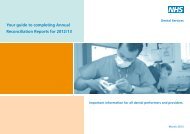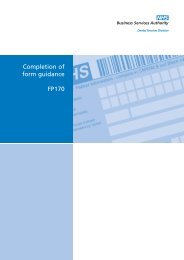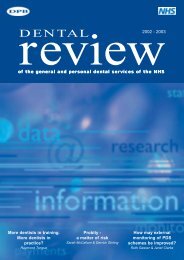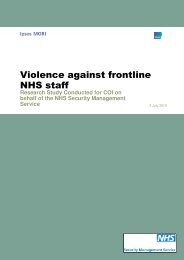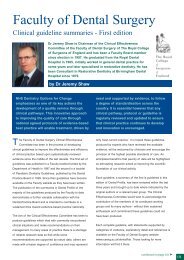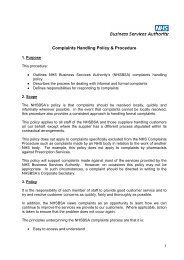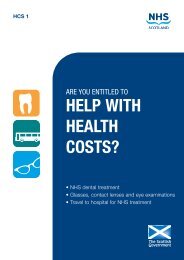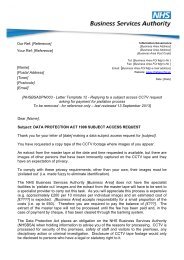Working in partnership: Getting the best from inspection, audit ...
Working in partnership: Getting the best from inspection, audit ...
Working in partnership: Getting the best from inspection, audit ...
- No tags were found...
Create successful ePaper yourself
Turn your PDF publications into a flip-book with our unique Google optimized e-Paper software.
ObjectivesThe Concordat has been developed by <strong>the</strong> <strong>in</strong>spect<strong>in</strong>g bodies, <strong>in</strong> conjunction withhealth services. It is made up of 10 objectives that enable organisations to worktoge<strong>the</strong>r to remove unnecessary burdens associated with <strong>in</strong>spections, <strong>audit</strong>s orreviews. Each objective is underp<strong>in</strong>ned by a number of practices that are aimedat ensur<strong>in</strong>g that <strong>the</strong> objectives of <strong>the</strong> Concordat are be<strong>in</strong>g met.It identifies 10 objectives that are aimed at:• deliver<strong>in</strong>g more consistent and coherent programmes of <strong>in</strong>spection• improv<strong>in</strong>g services for patients, clients and <strong>the</strong>ir carers• reduc<strong>in</strong>g unnecessary burdens of <strong>in</strong>spection on staff provid<strong>in</strong>g healthcareUnderp<strong>in</strong>n<strong>in</strong>g <strong>the</strong>se objectives are a number of practices that will help tosecure effective implementation. The development and operation of suchpractices will take account of:• formal and <strong>in</strong>formal agreements between <strong>in</strong>spect<strong>in</strong>g bodies• <strong>in</strong>spect<strong>in</strong>g bodies’ respective statutory remits and relevant professionalstandards• <strong>the</strong> extent to which particular practices would enable bodies to fulfil <strong>the</strong>ir<strong>in</strong>dividual or collective functionsThe aim is to achieve greater consistency and cohesion <strong>in</strong> <strong>the</strong> <strong>in</strong>spection ofhealth and healthcare. However, while <strong>the</strong> closer alignment of methodologiesmay often be beneficial, <strong>the</strong> Concordat’s <strong>in</strong>tention is not to impose a s<strong>in</strong>gle<strong>in</strong>spection methodology or to replace <strong>the</strong> exist<strong>in</strong>g methodologies that <strong>best</strong> meet<strong>the</strong> needs of <strong>the</strong> services for which <strong>the</strong>y have been developed. Equally, <strong>the</strong>Concordat does not affect <strong>the</strong> statutory remit of <strong>in</strong>dividual <strong>in</strong>spect<strong>in</strong>g bodies.Where <strong>the</strong>re is any overlap or conflict <strong>in</strong> statutory remits, <strong>the</strong> bodies concernedwill seek to manage this effectively.SignatoriesSo far 20 organisations <strong>in</strong>volved <strong>in</strong> <strong>the</strong> regulation, <strong>audit</strong> or review of health andsocial care have signed up to <strong>the</strong> Concordat. There are two types of signatories:• full signatoriesFull signatories are those organisations that directly or <strong>in</strong>directly regulate,<strong>audit</strong> or review health or social care <strong>in</strong> England and/or rout<strong>in</strong>ely requestdata <strong>from</strong>, or carry out <strong>in</strong>spections of, NHS organisations and providers of<strong>in</strong>dependent healthcare.Concordat Gett<strong>in</strong>g <strong>the</strong> <strong>best</strong> <strong>from</strong> <strong>in</strong>spection, <strong>audit</strong>, review and regulation of health and social care May 2006 7



